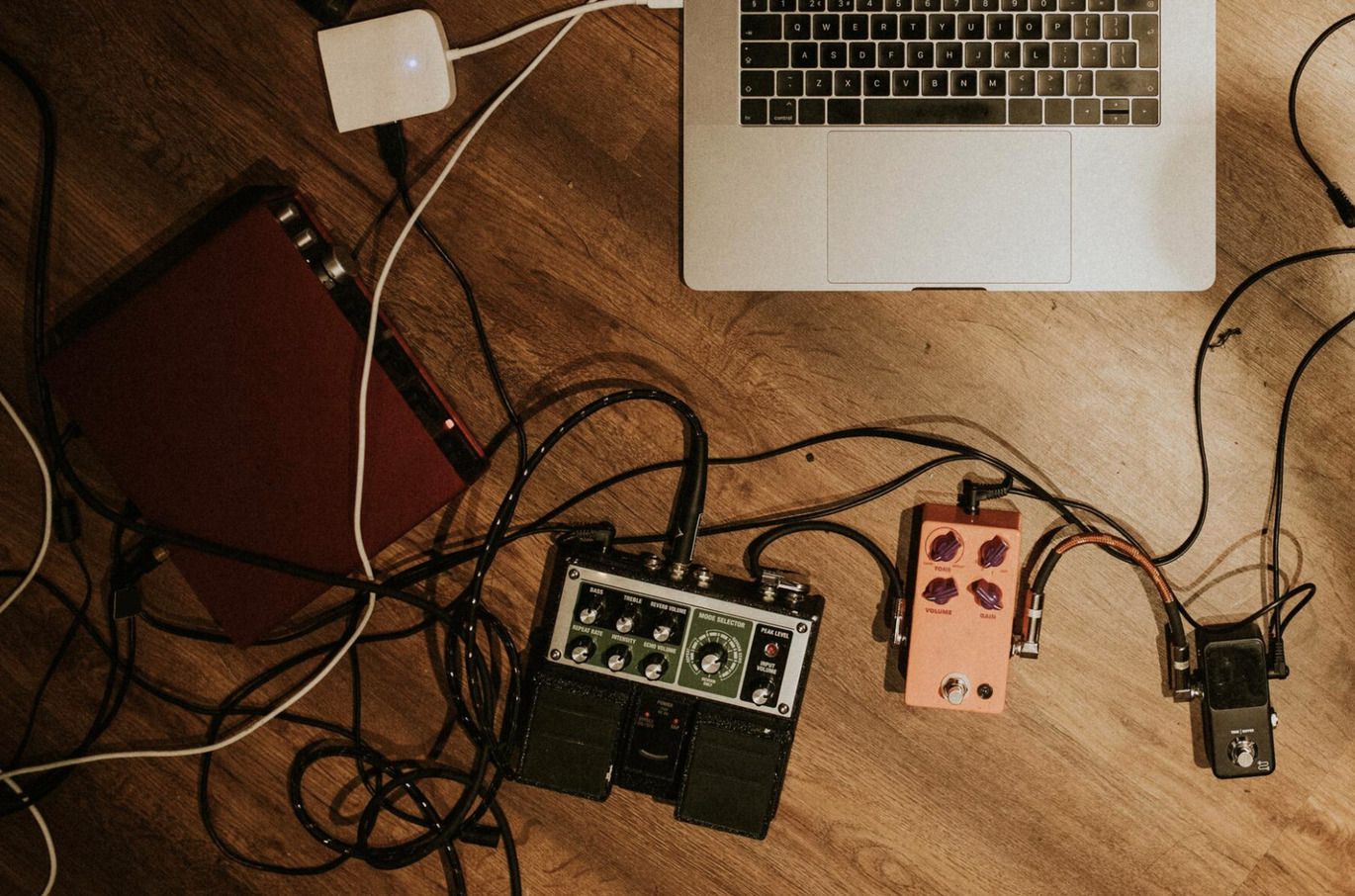When recording live instruments or vocals for music production, having the right studio setup is essential.To get the best sound quality out of all your available equipment and software, you need to know how to connect multiple devices to your audio interface correctly.
Managing multiple audio devices and perfecting sound quality can be overwhelming but with the right guidance, connecting multiple devices to your studio audio interface is possible.
This article will walk you through the steps of setting up an expansive home recording and production space, providing instructions on how to connect all of your instruments and mics together for optimal performance.
Contents [hide]
- Overview of studio audio interfaces and its key features
- Identifying the right type of cables for your setup
- Preparing your devices for connection
- Step-by-step guide on how to connect multiple devices to one interface
- Tips on optimizing performance and sound quality with multi-device setups
- Benefits of connecting multiple devices to one interface
Overview of studio audio interfaces and its key features
Studio audio interfaces are one of the fundamental components of modern music production. They provide the essential link between your recording equipment and your computer software.
These devices play a crucial role in capturing high-quality recordings and getting the most out of your studio monitors. The key features of studio audio interfaces include their high-quality preamps, low latency processing, and compatibility with a wide range of devices.
The preamp quality is essential for capturing and amplifying the input signals in a clear and accurate manner.
Low latency processing allows you to hear what you are recording almost instantly, which is vital for recording live performances.
Finally, compatibility with various operating systems and devices ensures that you can integrate your studio audio interface with your current setup seamlessly.
Understanding these key features is crucial to choosing the right studio audio interface for your recording needs.
Identifying the right type of cables for your setup
Having the correct cables ensures that there is optimal sound quality without any interference or connectivity issues.
When selecting cables, it is important to consider factors such as the length of the cable, the compatibility with your interface and devices, and the type of connection required.
Whether it’s XLR, RCA, USB, or Thunderbolt, each cable type has its unique advantages and disadvantages when it comes to studio audio interfaces.
Understanding your setup and selecting the right cables can enhance your recording and production experience significantly.
Preparing your devices for connection
Preparing your devices for connection can be an easy task if you follow a few simple steps.
Firstly, ensure that your devices are compatible with your audio interface. Check the user manual or the manufacturer’s website for information on compatibility.
Next, make sure that all devices are updated with the latest software or drivers. This will prevent any malfunctions or compatibility issues.
Finally, organize your cables and connections to avoid any confusion during setup.
By taking these steps to prepare your devices, you’ll be able to easily connect your equipment and produce quality audio in no time.
Step-by-step guide on how to connect multiple devices to one interface
Firstly, ensure that your interface has enough inputs to connect all your devices.
Then, connect each device’s output to the corresponding input on the interface. Make sure you have the correct cabling and adapters for each device.
Next, ensure that your interface’s drivers are installed and configured correctly on your computer.
Finally, adjust the levels on each device to avoid distortion and adjust the gain on your interface to ensure a good signal-to-noise ratio.
With these simple steps, you’ll be on your way to creating music with ease and efficiency.
Tips on optimizing performance and sound quality with multi-device setups
Connecting multiple devices to a studio audio interface can be a daunting task, but with the right tips and tricks, you can optimize performance and sound quality in no time.
It’s important to note that each device you connect to your interface adds an additional layer of complexity to your setup, which can cause potential performance and sound issues.
To ensure smooth operation, consider utilizing high-quality cables, regularly updating your drivers, and avoiding daisy-chaining devices.
Additionally, try adjusting your buffer size to minimize latency and selecting a compatible sample rate.
By taking these steps, you can achieve optimal performance and incredible sound quality with your multi-device setup.
Benefits of connecting multiple devices to one interface
Connecting multiple devices to one studio audio interface is a powerful way to simplify your recording process. With the ability to connect multiple microphones, guitars, keyboards, and more, you can create a professional-quality recording with ease.
The benefits of using this type of setup are numerous, from allowing for more versatile recording options to improving the sound quality of your recordings. By connecting everything through one interface, you can easily tweak individual levels and settings to achieve the perfect mix.
Additionally, a single audio interface will free you from the hassle of dealing with multiple drivers and cables, making the recording process much smoother and more streamlined.
By taking advantage of this powerful method, you’ll be able to take your recordings to the next level and enjoy a more efficient and enjoyable recording experience.

